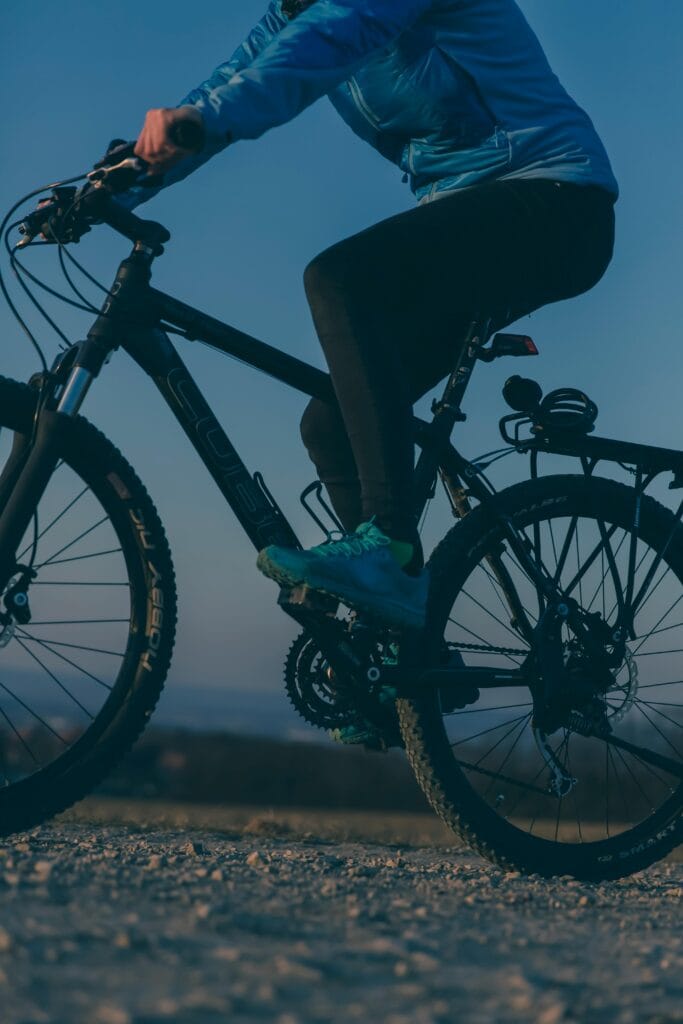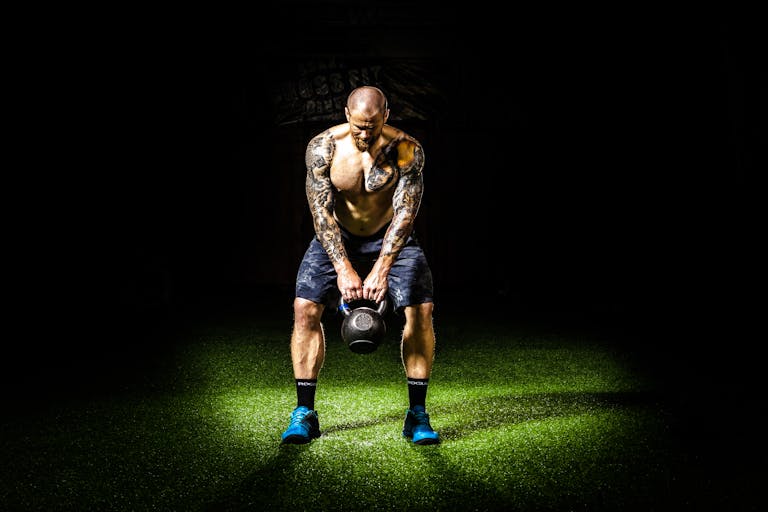FREE SHIPPING OVER $50
Cyclists: If Your Hip Flexors Are Tight, You’re Losing Power—Fix It Fast

You clip in, push off, and settle into your rhythm. The wind is in your face, the sun is on your back, and you feel a sense of freedom. But after a few miles, you notice something is off. Your legs feel powerful, but your cycling feels sluggish. That hard-earned sprint feels less explosive, and every climb feels like a monumental effort. You might even feel a nagging ache in your knees or a persistent tightness in your lower back. You assume the problem is in your legs, but what if the true culprit is a hidden weakness in a completely different area?
The secret to unlocking your full cycling potential isn’t in your quads or hamstrings; it’s in your hips. The repetitive, hunched position you maintain for hours on the bike puts immense stress on your hip flexors, causing them to become tight and weak. This simple fact is a cyclist’s secret weapon. By understanding how to stretch and strengthen your hip flexors, you can unlock more power, increase your endurance, and say goodbye to common aches and pains.
The Cycling Problem: What Happens to Your Hip Flexors on the Bike
The primary job of your hip flexors is to lift your knee toward your torso. This is the exact motion you repeat thousands of times on a bike. While this may seem like a good thing, the seated position keeps these muscles in a shortened, contracted state for extended periods. Over time, they become tight and lose their ability to fully lengthen. This leads to a critical imbalance: your hip flexors become tight, while the opposing muscles—the glutes and hamstrings—become weak and underutilized.
This simple imbalance has a profound effect on your cycling performance and overall health. It’s a silent saboteur that is robbing you of your true potential.
The Science of a Tight Hip: Why It’s Stealing Your Power
Tight hip flexors are a cyclist’s worst nightmare, and here’s the scientific reason why.
Reduced Glute Activation
Your gluteal muscles (the glutes) are the largest and most powerful muscles in your body. They are the primary engine for your pedal stroke, providing the force that pushes down on the pedals. However, when your hip flexors are chronically tight, they send a signal to your brain to “turn off” your glutes. This phenomenon is called reciprocal inhibition. Essentially, your tight hip flexors are preventing your most powerful muscles from firing properly, robbing you of the power you should be generating.
Poor Pedaling Efficiency
Optimal pedaling is a fluid, circular motion. Tight hip flexors create a “dead spot” at the top of the pedal stroke, where your knee is unable to come up as high as it should. This makes your motion choppy and inefficient. It also forces other muscles in your legs to work harder, leading to faster fatigue and a reduced ability to climb or sprint. Your body is fighting against itself with every rotation.
Increased Risk of Injury
The cycling position, combined with tight hip flexors, can lead to a forward tilt of your pelvis. This forward tilt causes an unnatural curvature in your lower spine and puts immense pressure on your vertebral discs. The result is often a persistent, nagging ache in your lower back. Additionally, the muscular imbalances can put extra stress on your knees and hips, leading to chronic knee pain and even more severe injuries.
The Fix-It-Fast Routine: Your 10-Minute Hip Flexor Solution
The good news is that you can correct these imbalances with a simple, consistent routine. You don’t need fancy equipment or a lot of time. Just 10 minutes a day can transform your cycling performance and your overall well-being. This routine focuses on two key things: stretching the tight hip flexors and strengthening the weak glutes.
1. Kneeling Hip Flexor Stretch
This is the classic, foundational stretch.
- Why It Works: This stretch directly targets the iliopsoas muscle, the main hip flexor. By lengthening this muscle, you restore the proper range of motion.
- How to Do It: Kneel on the floor with one knee down and the other foot forward, bent at a 90-degree angle. Tuck your pelvis slightly and gently lean forward, feeling the stretch in the front of your hip. Hold for 30-60 seconds on each side.
2. Glute Bridge
This is a powerful exercise for activating your glutes.
- Why It Works: The glute bridge directly trains the gluteus maximus, helping it to fire properly. It’s the perfect exercise to do before a ride to “wake up” your glutes.
- How to Do It: Lie on your back with your knees bent and feet flat on the floor. Push through your heels and squeeze your glutes to lift your hips off the ground until your body forms a straight line from your shoulders to your knees. Hold for a few seconds at the top and then lower down slowly. Repeat for 10-15 repetitions.
3. Psoas March
This is an excellent exercise for building strength and endurance in the hip flexors.
- Why It Works: Unlike static stretches, this movement strengthens the hip flexors through their full range of motion, which is crucial for cycling.
- How to Do It: Lie on your back with your knees bent and feet on the floor. Lift one foot off the ground and slowly march it toward your chest, then slowly lower it back down. Keep your lower back pressed into the floor throughout the entire movement. Repeat for 10-15 repetitions on each side.
4. Lunge with a Twist
This exercise combines a powerful stretch with core engagement.
- Why It Works: It lengthens the hip flexors while adding a rotational element that helps with hip mobility and torso stability, both of which are critical for cycling.
- How to Do It: Step forward into a lunge. As you hold the lunge, twist your torso toward the front leg. Hold for a few seconds before returning to the starting position. Repeat for 10 repetitions on each side.
5. Standing Leg Swings
This is a dynamic stretch that is perfect for a pre-ride warm-up.
- Why It Works: This movement helps to increase blood flow and range of motion in the hip joint, getting your muscles ready for the ride ahead.
- How to Do It: Stand next to a wall for support. Swing one leg forward and backward, maintaining good posture and keeping your core engaged. Perform 10-15 swings on each leg.
Building a Routine: Making Hip Health a Habit
Consistency is the key to unlocking the full potential of this routine.
- Before You Ride: Perform a 5-minute dynamic warm-up that includes the Psoas March and Standing Leg Swings.
- After You Ride: Perform a 5-10 minute cool-down routine that focuses on the static stretches like the Kneeling Hip Flexor Stretch and the Glute Bridge.
By making this small, consistent investment in your hip health, you will see a profound difference in your cycling performance and your overall fitness.
The Long-Term Impact of Stretching Tight Hip Flexors
The benefits of stretching and strengthening your hip flexors extend far beyond the bike.
- Improved Posture: By correcting the pelvic tilt caused by tight hips, you will naturally stand and sit with better posture.
- Reduced Pain: A stronger, more balanced body will lead to less strain on your lower back and knees, reducing chronic pain.
- Better Overall Fitness: A powerful, mobile hip is a cornerstone of overall fitness. It will improve your performance in all other activities, from running to strength training.
Conclusion
The frustrating feeling of a loss of power on the bike is not a sign that you are a bad cyclist. It’s a signal from your body that a simple, yet powerful, adjustment is needed. By understanding the role of your hip flexors and taking just a few minutes a day to stretch and strengthen them, you can correct the imbalances that are stealing your performance. It’s time to stop fighting against yourself and start working with your body. The time to unlock your full potential is now.
Related Articles
- Men Over 50 Are Building Muscle Faster Than Ever—Here’s the Science Behind the Surge
- Struggling With Tight Hips? These 5 Moves Help You Stay Strong and Mobile as You Age
- This Core Exercise Looks Easy—Until You Try It. Here’s How I Finally Made It Work
- He’s 63, Ripped, and Defying Aging. What He Told Me About Muscle Blew My Mind—You Need to Hear This
- Squats Hurting Your Knees? These 4 Fixes Changed Everything for Me



